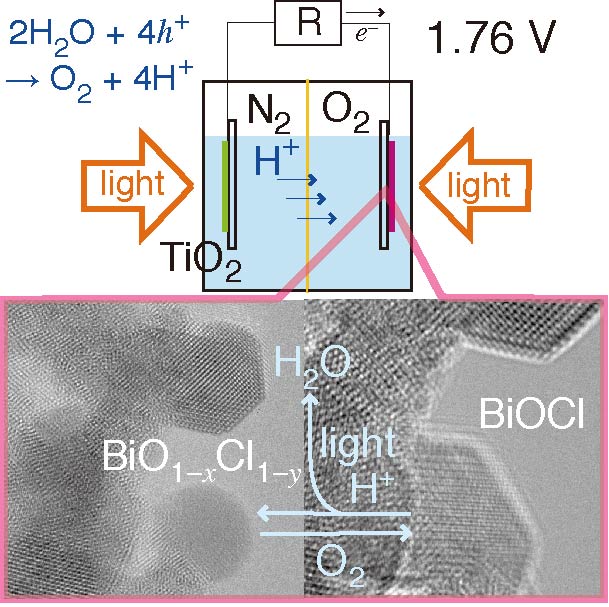Solar and fuel cells have been extensively investigated. However, the need for sustainability, durability, and an electromotive force greater than 1.5 V per cell has not yet been fully satisfied. Herein, a photofuel cell (PFC) utilizing two photocatalysts of TiO2 and BiOCl for using acidic water as a fuel is described. The PFC is designed such that water can be regenerated from the photogenerated O2 in the cell, and the electromotive force is as high as the difference between the conduction band minimum of TiO2 and the valence band maximum of BiOCl (theoretical: 2.75 V, experimental: 1.76 V). The photocurrents were in accordance with a kinetic model based on the combination of the excited electron concentration at TiO2 and the hole concentration at BiOCl. The reaction of surface sites of O and/or Cl-deficient BiO1−xCl1−y species formed following ultraviolet–visible light irradiation with O2 was in-situ monitored using Bi L3-edge extended X-ray absorption fine structure and X-ray photoelectron spectroscopy supported by Raman and UV-visible spectroscopy and could be involved in cathodic O2 photoreduction in the PFC. Furthermore, amorphous-like BiO1−xCl species were observed on the surface of BiOCl crystallines in high-resolution transmission electron microscopy. Importantly, this PFC comprising TiO2 and BiOCl is sustainable, recyclable, has a series resistance that can be controlled by adjusting the BiOCl particle size, and exhibits a more efficient charge flow because of band bending than that of a previously reported PFC based on rectification of the Schottky barrier.
